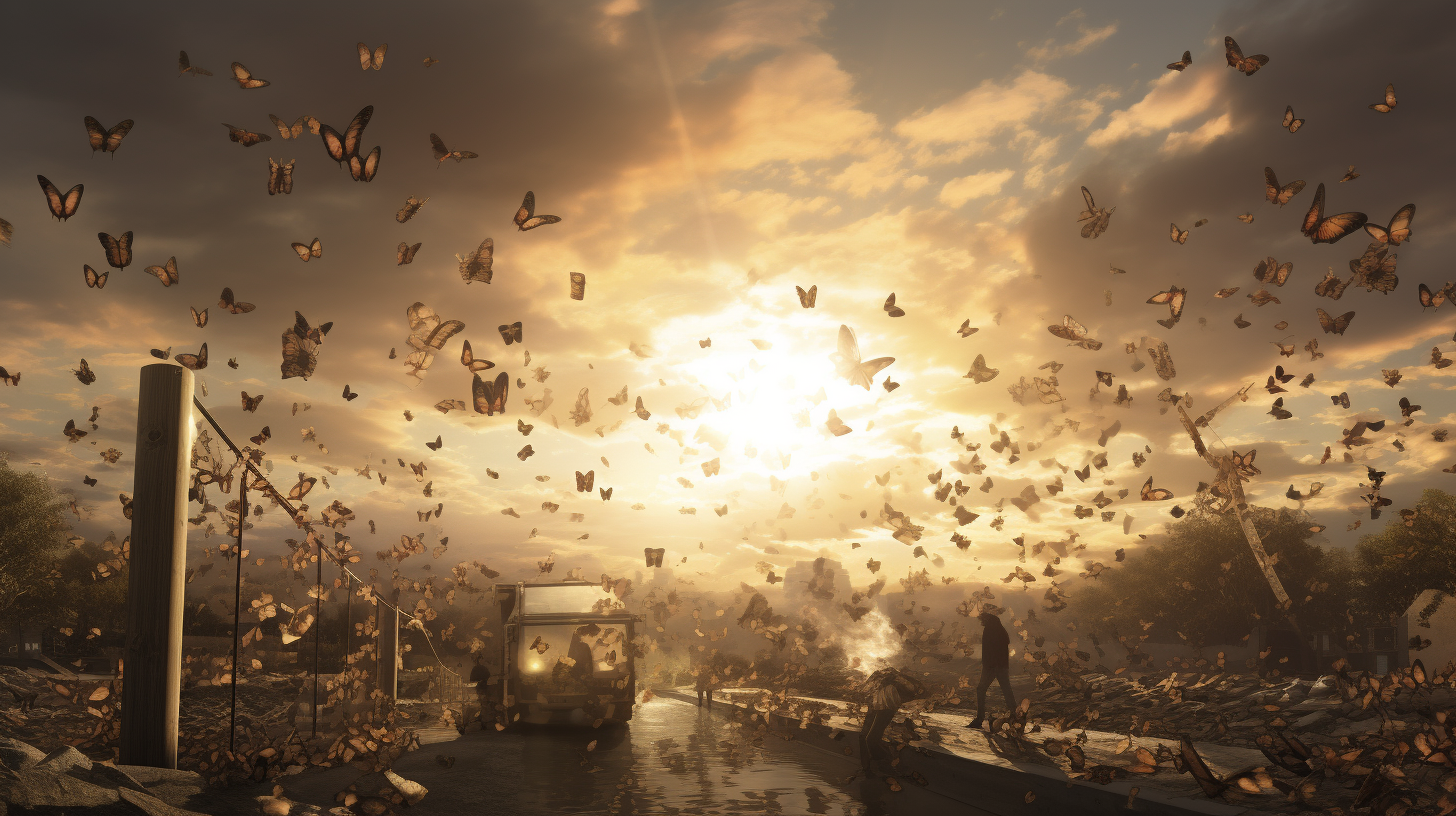Imagine a world where the flutter of vibrant wings has stilled, where flower petals languish, unpollinated, awaiting a visitation that never comes. This is not a fantasy, my friends, but an overture to the ‘Apocalypse of Butterflies’ – our reality where the fragile acrobats of ecology, our pollinators, are vanishing, leaving behind a withering tableau of ecological ruin.
Ornamenting the air no longer, these ethereal creatures were once the vital cogs in the wheel of life. In a grueling pas de deux with extinction, the butterflies, bees, and countless unheralded insects that sustained the sinews of nature have dwindled, victims to a silent onslaught of environmental degradation: pollution, habitat destruction, climate catastrophes, and the insidious spread of monoculture.
In science, the term ‘Lepidoptera’-imbued collapse is whispered reservedly, an encrypt for the demise of multiple ecosystems hinged on the gossamer wings of butterflies. The loss spirals beyond the aesthetic, striking at the very heart of harvests, as without these pollinators, the bounty of food crops stand imperiled, an echo of our previous exploration of the ‘ghost farms’ that haunt our landscape.
The statistics are grim, and even as flora fight to survive, the flight of our fragile pollinators seems fated like Icarus, doomed to crash as a result of humankind’s hubris. Each species that blinks out echoes a cascade through trophic levels, a harbinger of a broken food chain and a scar on the skin of our planet.
The metaphor of this ‘apocalyptic’ event is less about the end times and more about transformation – or the tragic lack thereof. Nature is resilient; it evolves and adapts, but what is left when the catalysts of regeneration are no longer? The permaculture enthusiasts and biodiversity guardians labor at the fringes of society, their efforts a mere whisper against the roar of industrial giants and the relentless march of climate change.
Some visionaries have looked to technology for salvation – the buzz of robotic pollinators and the meticulous splicing by genetic engineers promise a surrogate for nature’s agents. But is it hubris to believe we can mimic the intricate ballet that took millennia to perfect, or a necessity borne from desperation? As we wrestle with this question, our fields grow quieter, the colours less vivid, and the air less vibrant with life.
As butterflies adorn our wasteland in their death throes, we must ask ourselves, at what point does science fiction become science fact? Will we weave narratives of a world where the hand of humanity rights the wrongs, or one where we’re forced to live with the consequences of our actions?
The ‘Apocalypse of Butterflies’ is far from the revelatory end that its name suggests; it is but a doorway, a grim threshold to a future undefined. Our survival teeters on the edge of this razor, a balancing act between reverence for the intricate workings of nature and our capacity for change.
And as we ponder the last flight of our fragile pollinators, we must awaken not to the light of hope, but the clarity of impending darkness, the penumbra that beckons the onset of ultimate consequence – urging not for prophecies of salvation, but for action stark, immediate, and unyielding.
